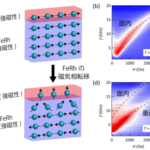光学システムを不要な反射から守り、性能を飛躍的に向上させたデバイス Device protects optical systems from unwanted reflections with dramatically enhanced performance
2023-06-27 ハーバード大学
◆光アイソレーションの性能は世界最高であり、光損失、電力効率、可変性などの指標でも競争力があります。この技術は、光通信や量子フォトニクスなどのさまざまな応用分野で革新的な可能性をもたらすことが期待されています。
<関連情報>
- https://seas.harvard.edu/news/2023/06/first-its-kind-integrated-optical-isolator
- https://www.nature.com/articles/s41566-023-01227-8
薄膜ニオブ酸リチウム上に集積化された電気光学アイソレータ Integrated electro-optic isolator on thin-film lithium niobate
Mengjie Yu,Rebecca Cheng,Christian Reimer,Lingyan He,Kevin Luke,Eric Puma,Linbo Shao,Amirhassan Shams-Ansari,Xinyi Ren,Hannah R. Grant,Leif Johansson,Mian Zhang & Marko Lončar
Nature Photonics Published:19 June 2023
DOI:https://doi.org/10.1038/s41566-023-01227-8

Abstract
Optical isolators are indispensable components of almost any optical system and are used to protect a laser from unwanted reflections for phase-stable coherent operation. The emergence of chip-scale optical systems, powered by semiconductor lasers that are integrated on the same chip, has generated a demand for a fully integrated optical isolator. Conventional approaches, which rely on the use of magneto-optic materials to break Lorentz reciprocity, present substantial challenges in terms of material integration. Although alternative magnetic-free approaches have been explored, an integrated isolator with a low insertion loss, high isolation ratio, broad bandwidth and low power consumption on a monolithic material platform is yet to be achieved. Here we realize a non-reciprocal travelling-wave-based electro-optic isolator on thin-film lithium niobate. The isolator enables a maximum optical isolation of 48.0 dB with an on-chip insertion loss of 0.5 dB and uses a single-frequency microwave drive power of 21 dBm. The isolation ratio remains larger than 37 dB across a tunable optical wavelength range from 1,510 to 1,630 nm. We realize a hybrid distributed feedback laser–lithium niobate isolator module that successfully protects the single-mode operation and linewidth of the laser from reflection. Our result represents an important step towards a practical high-performance optical isolator on chip.



